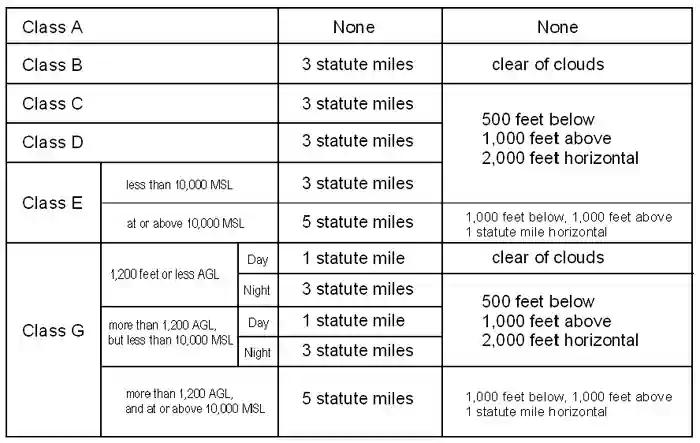Special VFR (SVFR): What It Is & How to Use It
Flying in marginal weather near busy airports can be a challenge – but that’s where Special VFR (SVFR) helps. Whether you’re just beginning your flight training, or advancing through your current flight training program, understanding SVFR is a must. Let’s explore how this clearance works, what it requires, and why proper flight training is key to using it safely and effectively.
What is Special VFR?
Special Visual Flight Rules (SVFR) is a clearance granted by air traffic control (ATC) that allows pilots to operate under Visual Flight Rules (VFR) within controlled airspace even when weather conditions fall below standard VFR minimums. This clearance is limited to the lateral boundaries of Class B, C, D, and E airspaces and only when requested by the pilot.
SVFR is often used for takeoffs or landings when visibility is limited but still allows the pilot to fly visually. Unlike regular VFR, this clearance must be specifically authorized by ATC.

Special VFR Requirements & FAA Regulations
SVFR regulations are outlined in FAA Order JO 7110.65 and the Federal Aviation Regulations (FAR) 91.157. Here’s a quick summary of the core requirements:
- Pilot must request SVFR; ATC will not offer it unsolicited.
- Only valid below 10,000 feet MSL and within Class B,C,D, or E surface areas.
- Visibility must be at least 1 statue mile and the pilot must remain clear of clouds.
- ATC communication is mandatory, and clearance is granted at ATC’s discretion based on traffic and current weather.
Read here for more on FAR 91.157 – Special VFR weather minimums
How SVFR Works
To obtain a Special VFR clearance:
- Pilot contacts ATC, usually via the airport control tower or Flight Service Station (FSS).
- If contacting FSS, they will relay the request to the appropriate ATC facility.
- ATC reviews current conditions, including IFR traffic and weather, before issuing clearance.
SVFR can only be used for arrivals and departures, not for enroute operations across multiple airspaces.
Benefits of SVFR
While SVFR is not used frequently, it offers several advantages in the right scenarios:
- Reduced delays at congested airports by allowing visual operations in low-visibility conditions.
- Improves flexibility for departures and arrivals when weather temporarily dips below VFR standards.
- Enables continuity in operations without waiting for full IFR clearance, saving time and fuel.
Risks and Considerations
Despite its benefits, SVFR comes with notable risks, especially for less experienced pilots:
- Reduced visibility can challenge situational awareness.
- Proximity to other traffic in busy airspace increases the risk of mid-air collisions.
- Unexpected weather changes may require a quick transition to instrument flight rules (IFR) – something only possible if the pilot is instrument rated.
That’s why flight training at a school like Superior Flight School is essential. Our Part 141 and Part 61 programs ensure that pilots receive the decision-making tools and flight experience necessary to handle SVFR scenarios safely.
Is an Instrument Rating Required for SVFR?
An instrument rating is only required for SVFR at night, per FAA regulation. However, even in daytime, conditions can deteriorate rapidly. A pilot without an instrument rating may struggle to maintain safety or comply with an unexpected IFR clearance.
Superior Flight School incorporates instrument rating training in both our Part 141 and Part 61 programs, helping pilots be prepared for any weather-related challenges in real-world scenarios.
Can a Student Pilot Request SVFR?
No. Under FAA rules, student pilots are prohibited from requesting or accepting Special VFR clearance. This restriction ensures safety, especially in complex or congested airspace where decision-making demands a higher level of training and experience.
Student pilots may still operate under the guidance of a Certified Flight Instructor (CFI), and certain controlled airspaces may impose further restrictions based on local procedures.
Final Thoughts on SVFR
Special VFR clearance is a powerful tool for qualified pilots, but must be used with discretion and a deep understanding of both the regulations and risks involved. At Superior Flight School, we provide the knowledge, hands-on training, and flight simulation that pilots need to safely utilize SVFR when appropriate.
Whether you’re just starting out looking to further your flight training, our FAA-approved courses prepare you for every phase of your aviation journey. Ready to become a superior pilot? Contact admin@superiorflight.com for more information. See you in the skies!
